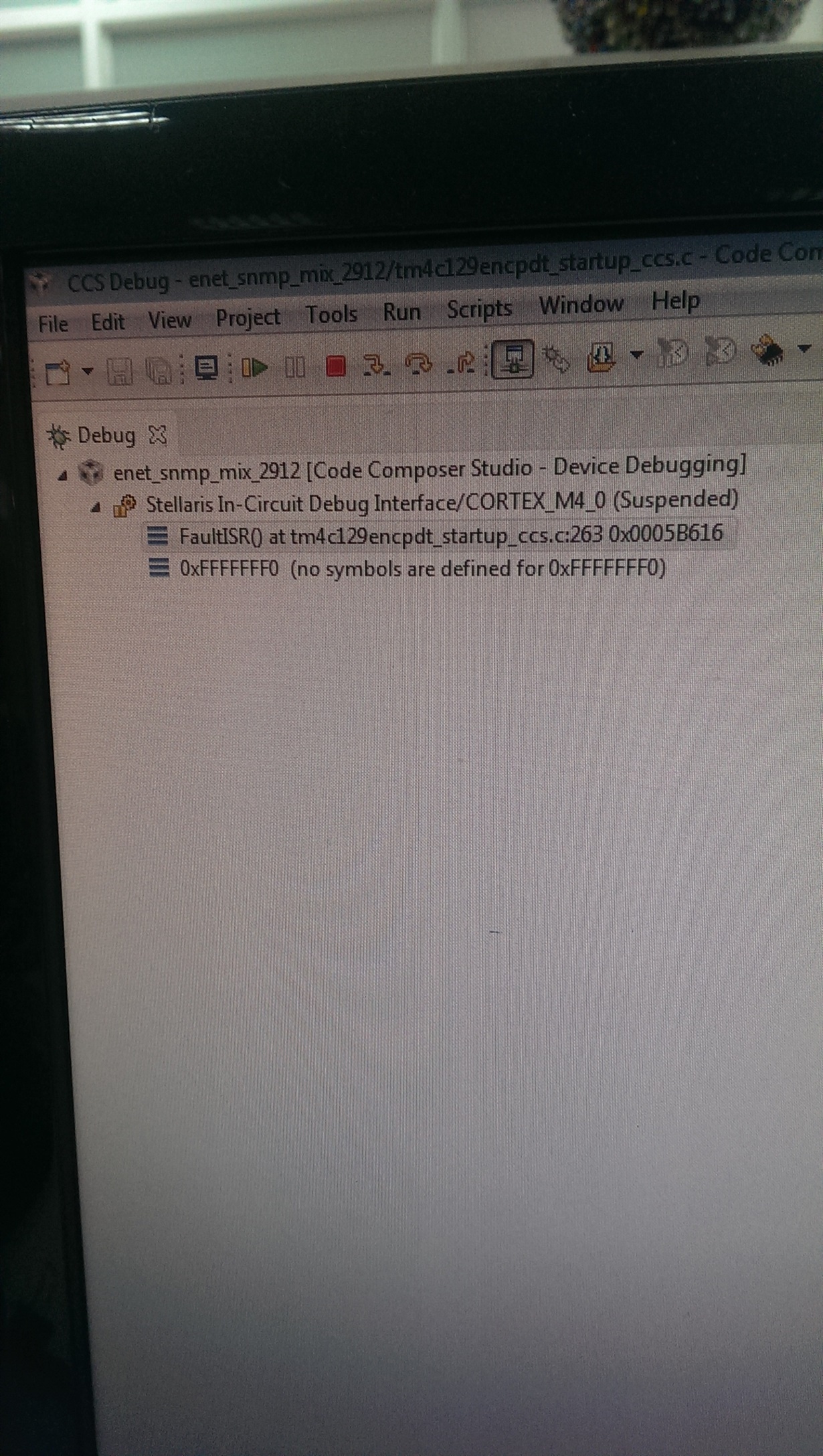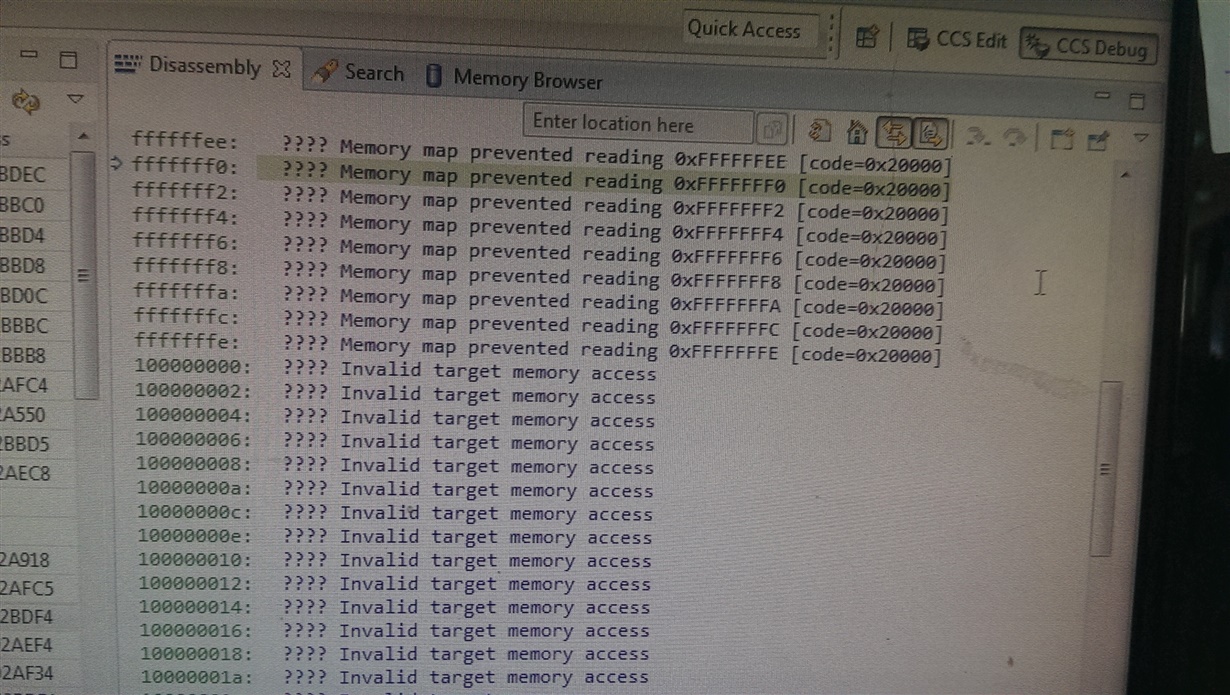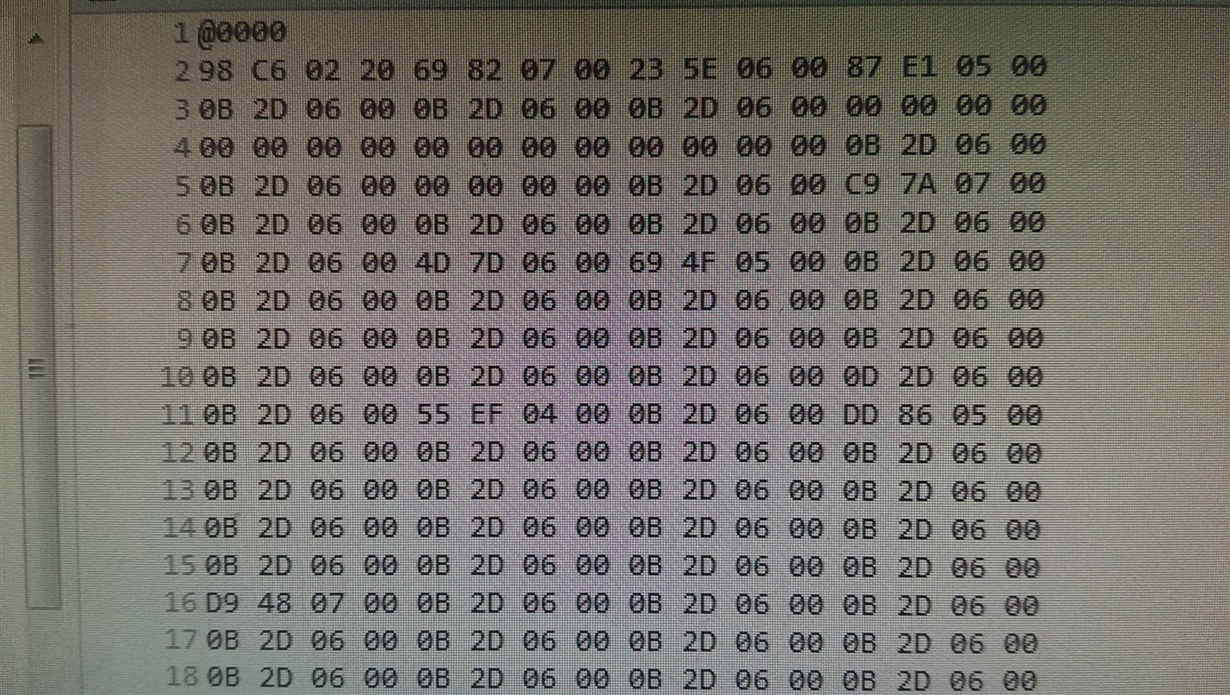Tool/software: Code Composer Studio
Hi everyone
My board uses TM4C129ENCPT, it connects to a device via UART(rs485 9 bits mode, UART0 for receiving data, UART3 for transmitting data ) and a website via ethernet.
The board gets the information from the website and send it to the device via uart. Sometimes when I set the information from the website my code run into FaultISR().
At that time, the NVIC_FAULT_STAT is 0x0008200, and the NVIC_FAULT_ADDR hold a address at reserve in Memory Model.
Could anybody help me to find this error and fix it?
Thank you.




